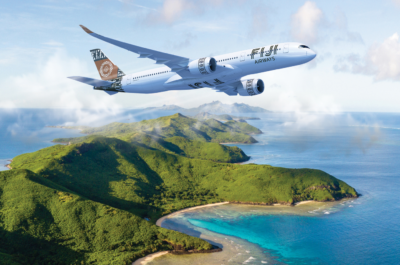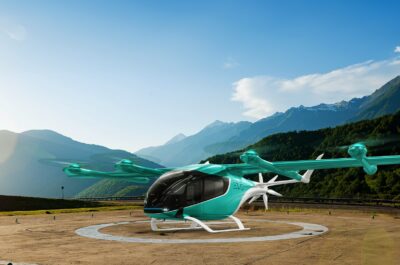…
After the relocation of American Airlines at Tokyo’s Narita Airport Terminal 2 and the launch of the its new Admirals Club, David Cush, American Airlines Vice President of Global Sales analyzes in TravelDailyNews the growing potential of the carrier in the region as well as the role of the global alliances to US carriers.
TravelDailyNews: How the launch of the new AA’s Admirals club at Tokyo’s Narita Airport will benefit your passengers?
David Cush: The new 13,300-square-foot Admirals Club lounge – conveniently located near American’s and oneworld airlines’ gates – serves as a private club of productivity, comfort and convenience that American Airlines customers have come to expect. The new club is much larger than the current Narita Admirals Club and is two-and-a-half times closer to American’s ticket counters and gates than the distance between the ticket counters and clubs of some of its U.S. competitors at Narita. Its location near oneworld airlines’ gates makes it more convenient for customers traveling between the United States and Japan or other destinations in Asia. The club is literally the first structure you come to outside of customs, making it very convenient for those passengers beginning their trip in Tokyo as well.
The technology is really the signature of this particular club because it features more than 100 Ethernet ports as well as powerports throughout the club allowing members free Internet and wireless access or wired access if desired. So, passengers can literally go into the club, upload and download their email at 2.5 megabytes, which is faster than here in the U.S. and go on their way, which helps them be very productive on a long international trip. In addition, a new printing solution allows passengers to print documents from their hotel rooms or elsewhere in the terminal and then pick up those printed documents in the Admirals Club. Other amenities include two multi-functional Business Centers, Lenovo personal computers, a cyber café, a conference room and seven private work areas. For those who wish to relax or refresh, the lounge also features five private spa-like shower suites, a quiet zone with comfortable chairs and a self-service bar and food area.
TDN: Do you feel that the facilities you have launched in several US hubs and Tokyo are better than your US competitors and why? Are we going to see same level facilities in Latin America and Europe?
D. C.:Yes. All of the Admirals Club lounges either have been updated or are being updated with new Lenovo computers and the new printing solution will also be expanded to all clubs. American has newer lounges than our U.S. competitors in key airports such as JFK, LAX, MIA, and DFW. We’re opening a second new Admirals Club lounge at our JFK terminal and a new Flagship Lounge for international passengers later this summer in addition to a new club in Nashville, TN. We also will be renovating or updating clubs across the system this year, including the club at Chicago’s O’Hare International Airport and Heathrow in London.
TDN: What are your estimations for the airline’s revenues and traffic after the launching of the new club and terminal relocation?
D. C.: oneworld will add 11 new airlines in 2007. With the expansion, oneworld`s passenger capacity will grow 20 percent, taking its share of the total global air transport industry to almost 20 percent, including 26 percent of the revenue of the world’s major airlines. The expanded Alliance will offer more than 9,200 daily departures, with a combined fleet of nearly 2,500 aircraft carrying 320 million passengers a year. The new members will extend the Alliance’s combined annual revenues by a third, to $86 billion.
To give you an idea of how significant Alliances have become, between 2000 and 2005, the growth in passenger traffic to and from oneworld partner airlines increased more than 70% compared to an increase of only 16% between American and airlines outside the oneworld alliance. So, the revenue potential is significant.
TDN: American Airlines’ announcements at Tokyo’s Narita raise the bar of competition? What are your future plans for Japan and Asia?
D. C.: We’re going to compete fiercely in this growing market and our hub at Narita positions us well to do so. The U.S. airlines can only fly to a handful of destinations in Japan and Asia, so how a U.S. airline connects its passengers to Japanese and Asian airlines is very important when competing in this market. Adding Japan Airlines to oneworld will be significant for our passengers because now their miles flown on JAL will count as top-tier qualifying miles, and they’ll benefit from the check-in and standby processes. The new American Airlines ticket counter, gate, and club locations are key as they enable American and its oneworld partners the ability to offer a more seamless, more integrated, more consistent product. American now has one of the best locations at Narita compared to its U.S. competitors. We are the only U.S. airline to serve Tokyo from DFW and from New York’s JFK airport in addition to offering a competitive service out of Chicago and Los Angeles. In addition, we’ve added new nonstop service to Delhi, India, and to Shanghai, China in the last year or so.
TDN: The new terminal is going to house four members of oneworld Cathay Pacific Airways, Qantas Airways, Finnair and the new member Japan Airlines. In what way will this facilitate your strategy plan in Asia – Pacific region and Australia?
D. C.: American’s relocation from Terminal 1 to Terminal 2 in Narita, and the opening of American’s new Admirals Club lounge at Narita represent a major competitive move by American because the ability to offer shorter and convenient connections is as important as offering nonstops to Asia from the U.S. For example, the travel time from JFK to SIN (Singapore) has decreased by 15 minutes, from ORD to PEK (Beijing) has decreased by 70 minutes, from LAX to HKG (Hong Kong) by 45 minutes, and from DFW to Seoul by 65 minutes.
We are now also able to offer new destinations due to reduced connection times and some scheduling changes we’ve made with our partner airlines. For example, we’ve picked up eight new destinations in Asia from LAX and we’ve picked up additional connections from New York to Osaka and Nagoya, Japan. In Chicago, we have one flight a day to Narita, but by partnering with JL’s flight, we are able to offer our customers two flights a day to Narita from Chicago and this puts us on par with United.
For American, which effectively uses Narita as its hub for the Asia-Pacific region and has more than 90 percent of its connecting customers connecting to oneworld airlines at that airport, the co-location with oneworld airlines and the new Admirals Club lounge location provide customers with a greatly improved travel experience. Now, passengers will arrive at jetbridges vs. about 1/3 of them having to be bussed to the terminal due to the congestion in Terminal 1 which impacted all airlines flying into that terminal. The larger, newer Admirals Club with state-of-the-art technology and its prime location really levels the playing field vs. other U.S. airlines as well.
TDN: According to your estimations how many US travelers are going to travel in Japan and especially in Tokyo this year and how many Japanese to the United States? Is this year a good opportunity for US airlines to increase their profits?
D. C.: The number of visitors from the United States to Japan averaged nearly 70,000 per month for the first ten months of 2006, which represents an increase of approximately 15 percent over 2005, as reported by the Japan National Tourist Organization.The number of Japanese tourists traveling abroad for 2006 averaged nearly 1.5 million per month for the first ten months of 2006, with more than 300,000 per month traveling to the United States. This represents an increase of 1.3 percent over 2005, as reported by the Japan National Tourist Organization.
The International Air Transport Association projects that by 2010, the number of global travelers will swell by an additional 500 million to 2.5 billion passengers. Notably, at 222 million, the Asia-Pacific region will contribute to the largest percentage of that growth.
TDN: What is your opinion for global alliances in the aviation sector and how are they going to impact the aviation industry in United States in the near future?
D. C.: For U.S. airlines, steadily increasing demand for international travel as well as increasing international capacity during the past several years have inspired the growth and importance that global airline alliances have on the strength of individual airline networks and their overall service. In turn, that impact plays a key role in influencing how customers, especially premium travelers, make their purchase decisions – adding greater value to the quality of a global alliance for U.S. airlines.
For American, oneworld expands American’s current network from 250 destinations in 40 countries to more than 600 destinations in 135 countries. With oneworld’s new recruits, that will expand to about 700 destinations in some 150 countries. But the benefits extend beyond more destinations. For American customers, it means being able to book global travel with the confidence of a strong airline alliance to support travel, to book single-itinerary travel on multiple airlines, to earn AAdvantage frequent flyer miles for bookings, to have priority for standby, and the ability to use airline lounges, such as American’s Admirals Club lounges and other oneworld airlines’ lounges, when traveling around the world.
TDN: Continental and Delta are members of Skyteam while United and US Airways part of Star Alliance. How the customers will benefit from the growth of the global alliances and their impact to US airlines?
D. C.: As U.S. travelers expand their travel network and frequency to more countries throughout Europe and Asia-Pacific, there is growing demand for U.S. airlines to respond by offering competitive travel options. American’s oneworld alliance is just one example of how airlines are able to maintain and grow the global network and provide passengers with seamless, integrated, and convenient travel options that take them to more destinations throughout the world.
In addition to the expanded route coverage and flexibility oneworld offers travelers, it also provides AAdvantage mileage earning opportunities. Not only can oneworld travelers earn AAdvantage miles, but they can also earn top-tier qualifying miles and recognition. Some of the oneworld airlines also have fully-reciprocal frequent flyer agreements in place that allow customers to redeem AAdvantage miles on oneworld airlines, further expanding American’s impressive list of potential award destinations.
Premium customers flying on American and other oneworld airlines can also take advantage of preferred check-in lines, preferential boarding, preferred seating, priority wait-listing and priority standby status. Premium customers and Admirals Club members can also access oneworld airline lounges around the world.
It’s worth noting that oneworld, the only alliance not to have had a member in bankruptcy court protection, is also again the only airline alliance whose members earned a combined profit in 2005 – $1.8 billion net vs. combined losses of more than $5 billion by SkyTeam`s members and of more than $20 billion by Star Alliance’s members. This is due to a philosophy that focuses on quality airlines with quality products and services so our customer’s expectations are met around the world.
TDN: As a founding member of oneworld what kind of initiatives are you going to undertake to improve the position and attract more members in to the alliance?
D. C.: oneworld will add 11 new airlines in 2007. Japan Airlines, Malév of Hungary and Royal Jordanian will join in the coming months as its first full members since inception. Japan Airlines (JAL), the biggest carrier in the Asia-Pacific, is the largest airline in the world not part of one of the big three alliances. Five other airlines in the JAL group will join alongside it as affiliates. Malév is one of the best-positioned airlines in Central and Eastern Europe while Royal Jordanian is the first carrier from the Arab world – the world’s fastest growing region for air travel – to find a home with a global airline alliance.
In late 2006, oneworld announced that Dragonair –the Hong Kong-based airline that serves more destinations in China than any other airline not based on the mainland and is regularly voted the region`s best – will join oneworld in 2007 as an affiliate member. The addition of Dragonair will strengthen oneworld`s position in China as it serves 19 mainland destinations with 400 weekly flights. A dozen of these flights will be new markets for the Alliance, nearly doubling oneworld’s Chinese penetration to 22 destinations.
Also lining up to join as affiliates are LAN Argentina and LAN Ecuador, with other members of the LAN alliance – LAN Airlines, LAN Express and LAN Peru – already members. This will further strengthen oneworld’s position as the leading alliance for Latin America. With Varig’s departure from Star Alliance at the end of January, oneworld will be the only alliance with any member airline south of Mexico.
These new partners will build on the momentum created by oneworld in recent years – momentum that included being named the world`s leading airline alliance for the third year in a row in 2005 by the World Travel Awards, considered the biggest award program in the industry. In addition, oneworld member airlines earned more individual accolades than members of any other alliance combined, including Business Traveller and Executive Travel Magazine’s “Best Domestic Airline” in the United States for American Airlines in 2006; Air Transport World’s “Airline of the Year” for Cathay Pacific in 2005; and SkyTrax “Airline of the Year” for British Airways for 2006.










































































